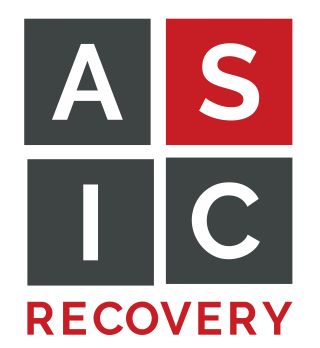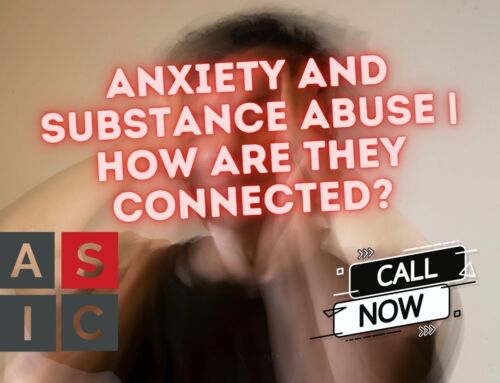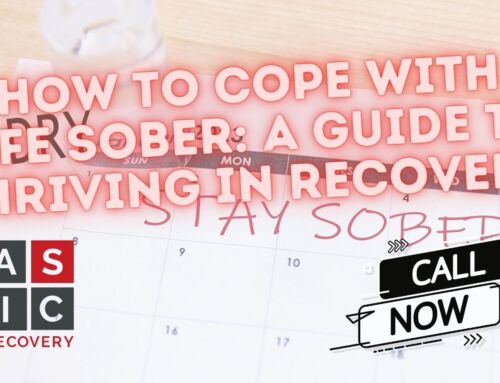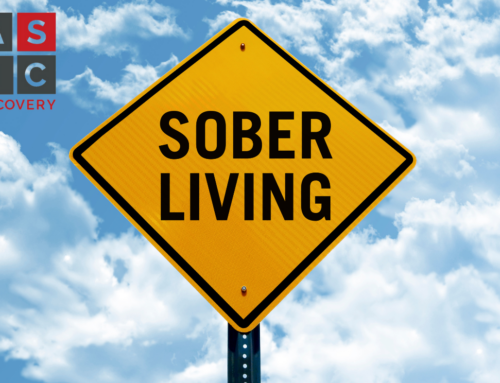MAT stands for medication-assisted treatment and has become a commonly used therapy for people with alcohol use disorder. Most people in the United States have had at least one alcoholic drink in their life. However, the National Institute on Alcohol Abuse and Alcoholism (NIH) has found that close to 16 million people become physically dependent on alcohol.
According to the Centers for Disease Control and Prevention (CDC), excessive drinking is defined as:
- Binge drinking – Drinking 4 to 5 alcoholic beverages (servings) in a 2 hour period
- Heavy drinking – Drinking 1 to 2 alcoholic beverages (servings) daily that add up to 7 to 14 alcoholic beverages a week.
- Alcohol use disorder is made up of binge drinking, heavy drinking, and becoming physically dependent on alcohol. This can be accompanied by cravings, the obsession to keep drinking regardless of consequences, and withdrawal symptoms in the absence of alcohol.
Anyone who drinks heavily or goes on alcoholic binges is at risk of becoming physically dependent on it. Heavy drinking or binge drinking can also be an indicator that alcohol use disorder is present. Alcoholism or addiction is a disease. It requires treatment adresses medical, mental, and (some would say) spiritual issues.
You may think that some of the most dangerous drugs to go through withdrawal from are crystal meth and heroin. Alcohol withdrawal can be more dangerous than withdrawal associated with many narcotics. This is because alcohol withdrawal can include seizures and can kill you.
Because alcoholism is such a deadly disease, sometimes more is needed than traditional methods of treatment. That’s where MAT comes into play. MAT can be used as a tool that can prevent a relapse. Even if they are sober for many years, many alcoholics that relapse pick up right where they left off. A relapse can also be much worse every time it happens.
In this article you’ll read about what MAT for alcohol abuse disorder is, what medications are used with it, and who MAT is for.
What is MAT?
MAT is a treatment method that’s aim is to help those suffering from substance use disorder (alcoholism and addiction) that utilizes both medication and behavioral therapy. SAMHSA has found that the utilization of MAT can increase the chance of someone with substance abuse disorder getting and staying sober.
MAT is not a one-size-fits-all approach to fight the disease of addiction. It’s tailored to each patient’s individual needs. Doctors and patients work together to find what medications and therapy are needed based on the patient’s history of alcohol and drug abuse.
Both group and individual counseling are important aspects of MAT. This type of counseling helps a patient get to the root cause of their addictions. Relapse triggers are identified and addressed. Coping skills for living life sober are taught. Modalities of recovery including 12-step meetings and SMART recovery meetings are highly encouraged.
Where does the medication come in? Going through withdrawal from any addictive substance is extremely difficult. A person who tries heroin may unintentionally become addicted and continue to use just so they won’t go through withdrawal. This fear of withdrawal can keep a person in the grips of addiction for years.
A person addicted to crystal meth may experience intense mental anguish and severe pain when they try to stop using the drug. This makes the thought of withdrawal unbearable.
Then there’s alcohol. Withdrawal symptoms of alcohol include:
- Insomnia
- Intense sweating
- Hallucinations
- Seizures
- Tremors
- Nausea
- Vomiting
- Diarrhea
- Depression
- Panic Attacks
The point is regardless of the substance withdrawal can be extremely painful. Medications associated with MAT can ease the severity of withdrawal symptoms. They can also reduce physical cravings and can be prescribed long-term to keep cravings down to a manageable level.
Many people with substance abuse disorder relapse within 30 days of getting sober. MAT can help people get over this hump so behavioral therapy is given time to actually work.
If a person doesn’t stay sober traditional therapies and treatment become less effective.
What is MAT for Alcohol Use Disorder?
Alcohol use disorder can be an extremely difficult condition to overcome. It’s different from many drugs because it’s legal. Alcohol can be found at clubs, bars, liquor stores, and convenient stores. Movies contain scenes of people drinking alcohol. There are also many advertisements for alcohol.
For many, alcohol is something that no celebration is complete without. Since alcohol is so acceptable and available, admitting that you might have a problem is not easy. Without the admission of a problem, recovery is virtually impossible.
There are different medications associated with MAT for alcohol use disorder.
They include:
- Disulfiram
- Naltrexone
- Acamprosate
Disulfiram is probably one of most well known medications associated with MAT for alcohol use disorder. Once you go through the detox stage from alcohol, disulfiram can be prescribed. IT can be highly effective. You take this medication in the form of a tablet once a day.
The goal of disulfiram is to deter you from drinking with it’s awful side effects. Even if you drink a very small amount of alcohol, you will experience these side effects.
Some of these side effects are:
- Headache
- Vomiting
- Chest pains
- Nausea
- Difficulty breathing
Within 10 minutes of drinking any alcohol, these side effects will start to occur. They can go on for over an hour. Since these side effects are so intense (and possibly dangerous) many treatment MAT programs will not offer it.
It’s important to note that disulfiram doesn’t help with withdrawal symptoms or cravings for alcohol. It’s not used if you are presently under the influence of alcohol. This is why it’s required that you are free from alcohol for at the very least 12 hours.
Disulfiram comes in 250mg and 500mg tablets and is to be taken orally. You can crush the tablet and mix it with a beverage such as fruit juice, milk, or water. l When you first take disulfiram, you will be given a maximum dose of 500mg a day. After this initial phase of treatment, 250mg is often used as a maintenance dose.
This medication is really only useful if you are completely motivated and committed to staying sober from alcohol. It’s not recommended for you if you have severe medical conditions. If you are considering talking to a doctor or MAT program about using disulfiram, you should let them know if you have health conditions such as:
- Pregnancy
- Psychosis diagnosis
- Rubber allergy
- Heart disease
- Brain damage
- Head injury
- Mental illness
- Diabetes
- Underactive thyroid
- Epilepsy or seizures
- High blood pressure
- Liver disease
- Kidney disease
- History of a stroke or heart attack
There are other side effects besides the intended side effects that are possible when you take disulfiram.
They include:
- Mild headaches
- Garlic or metallic after taste
- Acne
- Impotence
- Drowsiness
- Skin rash
Even though the intended side effects of disulfiram are supposed to be unpleasing, medical attention should be sought if you experience:
- Extreme dizziness
- Abdominal pain
- Intense issues with breathing
- Change in liver function
- Seizures
- Psychosis
- Swelling of the throat, tongue, or face
Get medical advice if you experience any symptoms that could be associated with hepatitis, like weakness, fatigue, clay-colored stools, anorexia, vomiting, nausea, dark urine, or jaundice.
Since disulfiram can be easily set off by even the slightest detection of alcohol in your system, it’s important that you avoid products that contain alcohol such as:
- Hair sprays
- Hand sanitizer
- Alcoholic mouthwash
- Rubbing alcohol
- Perfume
- Aftershave
Food items to be aware of include:
- Sauces with alcohol
- Vinegar
- Kombucha
- Certain flavorings that may contain alcohol
Certain medications can raise the likelihood of side effects such as
- Non-prescription medications that have alcohol in them
- Cold syrups
- Warfarin
- Acetaminophen
- Cough syrups
- Diazepam
- Omeprazole
- Imipramine
- Phenytoin
- Amitriptyline
Naltrexone is another medication used for MAT for alcohol use disorder. This drug will keep you from experiencing any euphoria that’s associated with being intoxicated from alcohol. This is an effective treatment because it actually helps you disconnect alcohol from feeling good or fun. This can greatly lower your cravings for alcohol and keep you on the path of recovery.
Naltrexone can be given in table form or as an injection. This medication by itself is not sufficient for the treatment of alcohol use disorder. An individualized treatment plan and behavioral therapy are needed in conjunction with the medication for it to be of any help.
Naltrexone is not a narcotic and has a very low risk of being abused. If you are currently using alcohol, you can still be prescribed naltrexone.
As already stated, alcohol use disorder is a brain disease that causes a person to use alcohol compulsively regardless of any adverse consequences. Relapse is very common with alcohol use disorder. Even if you don’t stay completely abstinent, naltrexone has helped some people drink less.
Motivation and commitment are again key components of having success with naltrexone. How long you take naltrexone is between you and your treatment team. You could be on it anywhere between 3 months to a year. Presently there have been no concerns linked with the long-term use of this medication.
There are side effects associated with naltrexone.
These include:
- Ringing in the ears
- Dizziness
- Tiredness
- Chills
- Increased energy
- Decreased energy
- Constipation
- Aches
- Rashes
- Diarrhea
- Insomnia
- Nausea
- Vomiting
- Abdominal pain
- Headaches
- Anxiety
- Loss of appetite
You should watch out for these side effects. If they occur and seem to be getting worse, it’s important that you seek medical attention. Your doctor may adjust the dose you’re on or decide that another medication may be better for you.
Less common but more severe side effect can include:
- Liver toxicity or failure
- Severe reactions at injection site
- Depressed mood
- Pneumonia
- Allergic reactions such as shortness of breath and swelling of the face, mouth, tongue, or eyes
Acamprosate has proven to be another effective MAT medication for alcohol use disorder. You need to be through an alcohol detox and free from withdrawal symptoms for acamprosate to be most effective. You can usually take this drug on your 5th day free from alcohol. Around a week after your first dose, it will reach its maximum effectiveness.
You take acamprosate tablets 3 times a day. It can greatly reduce your cravings for alcohol, thus improving your chance of staying sober long term.
Acamprosate is absorbed through your digestive tract instead of your liver. This is beneficial if you have liver issues as it will improve the effectiveness of the drug. As of now there are no known interactions with other substances or medications.
This is also a drug that disconnects alcohol use from pleasure.
Side effects of Acamprosate can include:
- Anhedonia
- Difficulty concentrating
- Loss of strength
- Loss of appetite
- Irritability
- Severe renal impairment
- Extreme depression
- Reduced urinations
- Potential fetal risk
- Hearing changes
- Fainting
- Vision problems
- Irregular heartbeat
- Hypersensitivity to the drug
- Suicidal thoughts
- Dizziness
- Headaches
- Flatulence
- Itchiness
- Vomiting
- Muscle weakness
- Insomnia
- Diarrhea
- Anxiety and panic attacks
How Do You Know if MAT is Right for You?
If you’re having trouble with alcohol and are able to stop cold turkey with any assistance, you are very fortunate. For most it’s not as easy as just “not picking up a drink”. Treatment for alcohol abuse should be tailored specifically to the individual who is suffering.
The early days of recovery can be difficult to maneuver especially with alcohol since it is socially acceptable and seems to be everywhere. MAT can be utilized to help you get through this tough time.
Although not a requirement, relapse is often a part of many people’s recovery journey. If you are a person who continues to relapse over and over again, you may want to talk to a treatment team about trying something different. If you haven’t tried MAT before, ask them if they think it’s right for you and what medication they think you should be on.
MAT medications are not about substituting one drug for another. It’s a holistic approach to the disease of alcohol use disorder and the disease of addiction in general. Medication, therapy, group counseling, 12 step meetings, SMART recovery, sober living, and other components of recovery, when used together, can be a recipe for success.
IOP at ASIC Recovery
Are you looking for substance abuse treatment in Texas?
At ASIC Recovery, our Intensive Outpatient Program (IOP) is dedicated to helping individuals develop healthier coping skills and build a recovery supportive network in all aspects.
Click to learn more.



